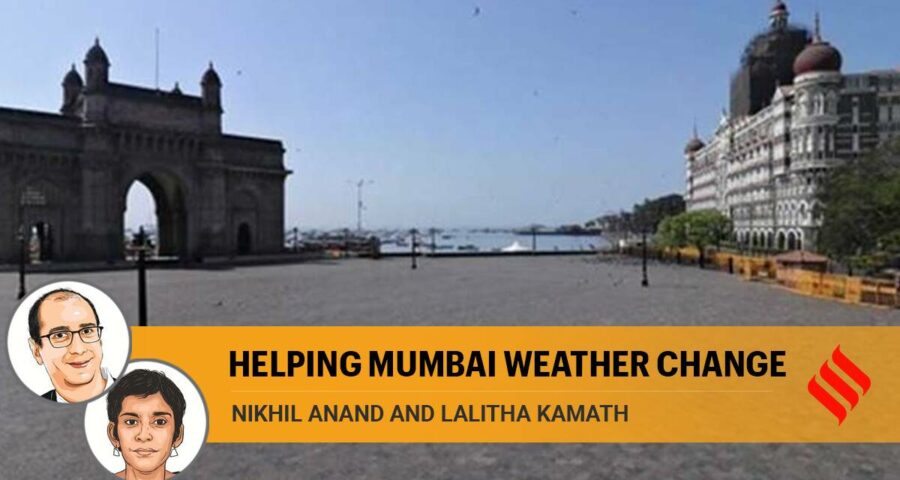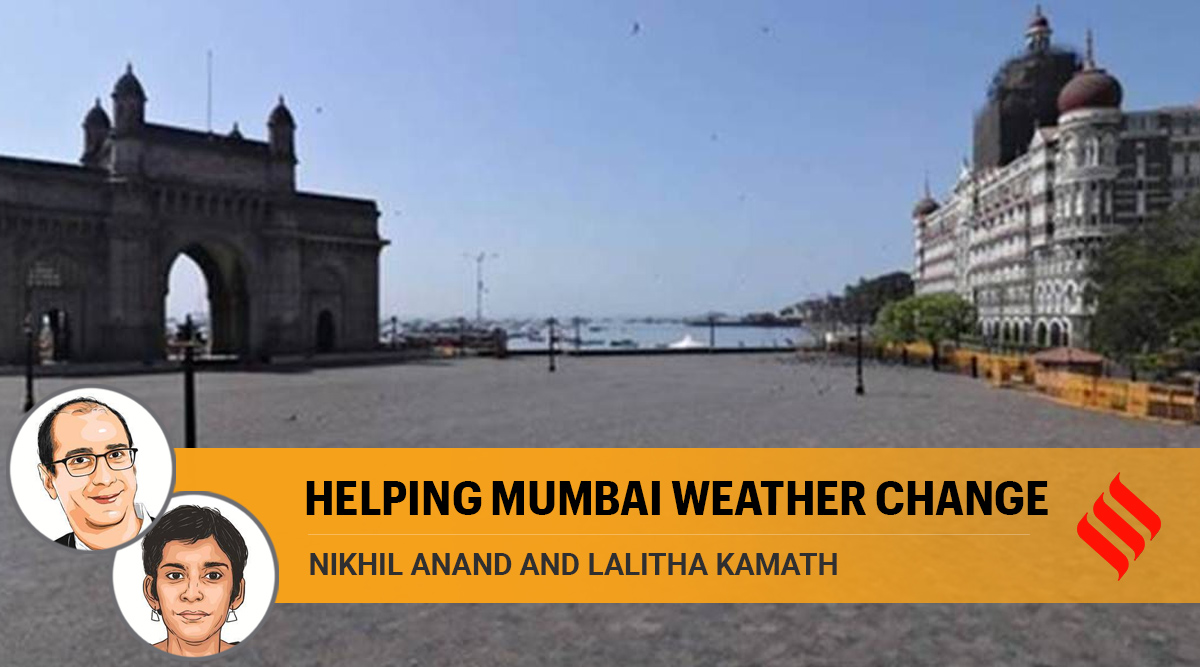All its existing and future infrastructure needs should be subjected to careful climate tests and any proposed interventions should be considered in a democratic, integrated manner.
Mumbai is drafting an ambitious Climate Adaptation Plan (MCAP). This is a much-needed exercise that matters not just for Mumbai’s environment, but for the future of the city itself.
At the launch event in the last week of August, Municipal Commissioner Iqbal Chahal recognised the urgency, and warned of the coming climate catastrophe. “We’ve seen in maps that by 2050, 70 per cent of A/B/C/D wards will be taken by the sea”, he said in a widely publicised remark. It would be “very dangerous” he said, for the city to ignore nature’s signals, and neglect climate planning: “It cannot be a number two priority.”
We commend the city’s administrators and politicians for standing united on this important goal. We also believe that to make a successful plan, the city must learn from other environmental and planning efforts in its recent past. As an urban planner and an anthropologist of urban infrastructure and environment, we make five recommendations.
First, climate change planning is not a luxury, nor is it merely a supplementary activity to protect the urban environment for a privileged few. Climate adaptation planning is necessary to protect all citizens from cyclones, storm surges and floods of our climate-changed present. As such, environment minister Aaditya Thackeray is correct in insisting “we need a climate lens for every decision in the city” — be it for buildings, land use or urban infrastructure.
As the city seeks to mitigate its emissions and adapt to new climate risks and vulnerability, all its existing and future infrastructure needs to be subject to careful climate tests. For instance, does the city’s electricity grid, metro, or coastal road mitigate or increase carbon emissions, flooding and storm surges? How resilient is the urban infrastructure to the catastrophic storms and cyclones of our climate-changed present?
Second, the municipal corporation should not miss the forest for the trees. While climate mitigation and adaptation initiatives are separately identified across six sectors in the MCAP process, technocratic solutions recommended for one area need to be considered across other sectors for their impacts to be fully understood. For example, while the government of Maharashtra’s initiative to expand the EV transport infrastructure is significant, the success of this step depends on the decarbonisation of the city and state’s energy infrastructure. EV technology is only as green as the energy that powers the grid, and Mumbai’s grid is currently powered by coal. The increase of EVs in the city would increase dirty emissions from coal thermal power plants. The interventions being proposed as part of the MCAP inhabit a complex urban network and should be considered in an integrated manner.
Third, the MCGM needs to build an effective process for ongoing climate change planning rather than focus only on creating the fixed product of a climate plan. Different neighbourhoods and socio-economic groups within the city face different climate challenges. The eastern suburbs, for instance, face a greater risk of flooding due to a substantial portion being on reclaimed lands. Broad-basing the plan would help to ground it in the specific challenges and coping practices employed in different localities. It would also allow for making course corrections that might be needed due to the evolving and unpredictable nature of the crisis we face. Responding effectively to the diverse climate challenges faced, therefore, calls for building a robust, decentralised process that connects broader principles of the MCAP to specific ward-level systems and plans, challenges, and networks of community organisations working on the ground.
Fourth, a climate adaptation plan will only make a difference to Mumbai if it is made with and for a majority of its residents. The city’s elected government needs to take the lead to democratise the process. An important step in opening up the plan is coordinating with the many government agencies that are involved in running different parts of the city.
Mumbai has already benefited from such a consultative process in the past. The preparation of the most recent Mumbai Development Plan (2014-34) catalysed several civic campaigns and collaborations, and substantial, although uneven, participation at the ward level. This participatory process, we have argued, offered a more democratic approach to creating knowledge and planning standards based on people’s lived experience. Mumbai’s climate change planning can productively build on the accumulated planning literacy, and networks of people planners created through this process.
Finally, and perhaps most critically, this cannot be a plan whose costs are borne disproportionately by the majority of citizens that live and work in the city’s informal settlements. For instance, in response to flooding of the Mithi river in 2005, slum-dwellers on one side of the river have been threatened with displacement and evictions for years now while more powerful businesses on the other riverbank are not touched.
The uneven and unfair distribution of environmental burdens in Mumbai’s recent past has undermined public confidence in environmental plans and actions in the city. They have obscured the fact, made starkly visible in the pandemic, that urban development and flourishing for anyone depends on a healthy environment for everyone.
Therefore, if the main goal of the MCAP is to increase the ability of the city to withstand environmental disasters in the present and near future, then it can only succeed if it ensures that all residents, particularly the city’s most vulnerable, can secure safe, healthy and resilient housing, public space and urban infrastructure in the city. This is very ambitious, no doubt. But that is also what makes it worth doing.
This column first appeared in the print edition on September 10, 2021 under the title ‘Helping Mumbai weather change’. Anand is an urban anthropologist and author of Hydraulic City and Promise of Infrastructure. Kamath teaches at the Centre for Urban Policy and Governance, School of Habitat Studies, TISS Mumbai.
Source: Read Full Article



